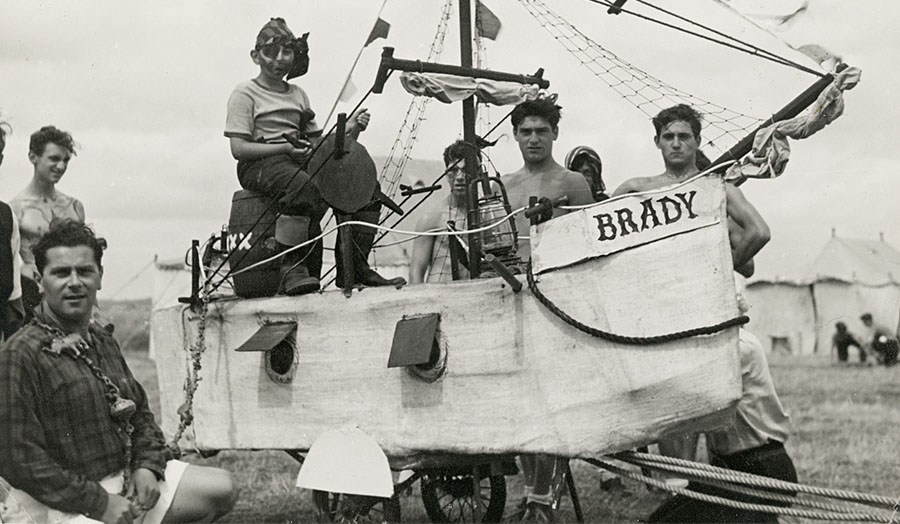Archival material documenting the history of the Brady Clubs is going on show in September, in an exhibition co-curated by the School of Art, Architecture and Design's Susan Andrews.
Date: 16 August 2022
For over seventy years the Brady Boys’ and Girls’ Clubs provided community, friendship and mentoring to thousands of Jewish youth in the East End of London. It was a place where life-long relationships were made, where young people stepped out of underprivileged and often difficult circumstances and were supported to follow their dreams.
The first Brady Club for Working Lads was founded in 1896 in the East End of London by Lady Rothschild who wanted to improve the social quality of life for those living in the area, many of whom were young Jewish refugees fleeing the violent pogroms in Russia and Eastern Europe. By virtue of the East End population at the time, the Brady Club became the first Jewish youth club in the country, although its attendance was not exclusive.
The Club continued to grow and in 1925 Miriam Moses OBE established the Brady Girls Club, which by 1935 had a purpose-built home in Hanbury Street E1. During the 50’s and 60’s the Club arguably had its heyday, much of it under the charismatic leadership of Yogi Mayer, himself a German refugee. The two Clubs amalgamated in 1960, the boys joining the girls in Hanbury Street, by which time the average nightly attendances exceeded 200.
Throughout its history, the Brady Club has provided poor and underprivileged children and young people with social and learning opportunities. The Club's activities were diverse – the Duke of Edinburgh’s Award was trialled at the Club and Jimi Hendrix played there! It offered training in practical skills, sports, music, drama and access to holidays in the English countryside, including at the Club’s own Skeet Hill House, but also abroad, extending the potential of each young person in its care.
By the late 1950s it was at the forefront of the youth movement in the country, employing paid youth leaders and volunteers. When the Jewish population of the East End greatly reduced in the 1970s, numbers at the Club dwindled and in 1976 the Brady Club moved from the East End of London to north London, where it became known as Brady Maccabi with a focus on sport. It finally closed in 2012 but maintained its use of Skeet House for youth groups until 2019.
Much of this history is recorded in photographs held in the Brady Photographic Archive, many of which were rediscovered recently having been stored in a loft for 40 years. Many of these are now on display in the current exhibition. Our collection is being digitised in order to preserve the stories and materials for the future. The Archive will be available online and will be stored with London Metropolitan University, the Bishopsgate Institute, and the Museum of Youth Culture. It will also be held at the National Library of Israel.
The exhibition has been co-curated by Susan Andrews, Emeritus Reader at The School of Art Architecture and Design, who is also part of the Brady Archive project team and has made a series of new oral history films for this show. Through funding from the Rothschild Foundation, the whole collection will digitised over the next three years,with a digital copy to be placed at London Metropolitan University.
Please visit the showcase of the work done to date at the Brady Arts & Community Centre, 192-196, Hanbury St, London E1 5HU – the Club’s former home.

The Brady Archive exhibition will be on display from 1 – 28 September 2022
Opening night: 1 September 2022 6pm – 8pm
Daily viewings: Mondays to Fridays 9am – 7pm, Saturdays 10am – 4pm, Sunday – closed
